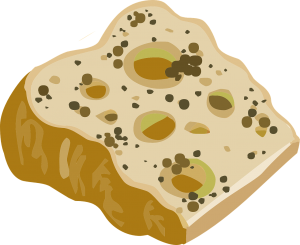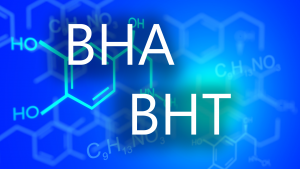Is Your Diet Full Of Deadly Toxins – Part 2
August 12 2018
In our last blog post, we discussed the effects of a variety of toxins that are present in the foods you regularly eat. These toxins include pesticides, harmful bacteria and heavy metals. In this post, we’ll discuss some other toxins you likely don’t realize are jeopardizing your overall health.
Below are additional toxins in your food to pay close attention to, if you want to stay as healthy as possible. Though it’s a longer post to read, taking the time to read it is definitely worth it! You’ll be surprised by what’s in your food supply and learn how to avoid these potentially deadly toxins!
Hormones And Antibiotics
The use of hormones and antibiotics in our meat and milk supply are additional controversial concerns that are good to be aware of. Meats produced at mass scale are generally subject to the use of hormones and antibiotics to maximize production. These foods are generally tested by manufacturers and stated to be safe to eat.
In Canada growth hormones are approved only for use in beef production to produce leaner meats. Whereas in the USA, a wider range of hormones are in use, including rGBH hormones for increased milk production.
Long story short, the use of hormones is surrounded by controversy, with suspicion that it does possibly affect human health in negative ways (e.g. possibly raising insulin-like growth factor (IGF) levels once consumed; which are associated with higher risks of breast, prostate and other cancers). Estrogen hormones are another controversial subject and are routinely added to beef and linked to possible early puberty in woman. Though the cause is still not definitively known, many believe that estrogens in meat and milk byproducts do play a roll as being at least a part of the cause.
Molds
Foods can harbor both good and bad types of microscopic fungi referred to generally as “mold”. Many different types exist – some friendly, while others not so much. Molds including those found in certain types of cheeses (e.g. blue cheese) are perfectly safe to eat, while others can be deadly or cause nasty effects.
Some may cause allergic reactions or produce mycotoxins that can cause illness.
Molds can grow on various types of foods including fruits, vegetables, meats, condiments such as jams, jellies, pickles, etc. This can occur if food is left beyond the expiry date, or for extended periods of time, regardless of where it is stored (on the counter or fridge).
It’s wise to keep an eye on what you consume and check the date before eating, as molds can be hidden out of site within the food item.
Tips to minimize your risk include:
1) Inspect food you buy to ensure no mold is present.
2) Don’t leave refrigerated foods out for extended periods.
3) Keep an eye on expiration dates.
4) Keep kitchen surfaces clean using baking soda and water, and/or bleach cleaning solutions.
5) Likewise, clean your refrigerator periodically.
6) Clean and discard old dish towels, sponges or scrubbers periodically.
7) Keep house humidity levels low (below 40% if possible)
Preservatives
The addition of preservatives to our foods does have its benefits. Preservatives protect us from spoiled foods that in turn may hurt our wellbeing and they also extend the shelf life of products. However, preservatives are a double edged sword in that they do have consequences that can be harmful to us.
Some preservatives are more controversial then others. The more questionable include sulfites, sodium benzoate, nitrites, Butylated Hydroxyanisole (BHA) and Butylated Hydroxytolunene (BHT) and Propyl Gallate.
When it comes to your diet, most of these can be found in processed foods. All of these are chemicals used throughout the food production industry, and have been very controversial in recent years as to how they affect our health.
Bisphenol (BPA)
 Bisphenol A (BPA) is a common chemical used in the production of plastics and epoxy resins since 1957. In food production it has been used in products such as plastic bottles and as a lining for the inside of many types of food and beverage cans, including those used for feeding infants, along with many other industrial uses. In 2005 alone roughly 4 millions tonnes of BPA was produced, being one of the highest produced chemicals globally!
Bisphenol A (BPA) is a common chemical used in the production of plastics and epoxy resins since 1957. In food production it has been used in products such as plastic bottles and as a lining for the inside of many types of food and beverage cans, including those used for feeding infants, along with many other industrial uses. In 2005 alone roughly 4 millions tonnes of BPA was produced, being one of the highest produced chemicals globally!
BPA is a known toxic chemical that studies seem to show could contribute to a variety of possible health issues, including hormone imbalances, infertility problems, heart disease, hypertension, pre-diabetes, some forms of cancer and obesity.
The USDA and Health Canada have since banned the use of BPA in baby bottles and cups, however, it is still widely used in other products, and recent studies have found that 90% of people still have it in their blood, with exposure on the rise. This from a recent Canadian study, whose health authorities had officially declared BPA as “toxic” years ago. So exposure is not slowing down and efforts to remove it from our general food supply have had limited effect thus far.
Your best bet is to try to avoid exposure by limiting use of plastics that are in contact with your food whenever possible. This includes discontinuing the use of bottles or containers made of plastic to store foods and reducing or eliminating the purchase of canned goods whenever possible. Instead, opt for safer alternatives like glass, or fresh goods that do not contain these chemicals.
Butylated Hydroxyanisole (BHA) & Butylated Hydroxytoluene (BHT)
Both BHA and BHT are used as a food preservative in a very wide variety of products, including many fast foods, cereals, snack foods, cookies, drink mixes and even sausages and vegetable oil, to name a few. You can often spot them labeled on the ingredient list.
 These chemicals are used mainly to prevent foods from becoming oxidized or rancid. While this is good, the downside and controversy surrounding their use is worth considering.
These chemicals are used mainly to prevent foods from becoming oxidized or rancid. While this is good, the downside and controversy surrounding their use is worth considering.
As an example, the International Agency for Research on Cancer, has classified BHA as a possible human carcinogen and long term animal studies have linked long term exposure to various types of cancer. Both are also linked to allergic reactions and other possible serious health issues.
In the USA, the FDA has cleared both for usage in foods and so far their is no official ban their use. At low doses they are believed to be safe to consume, however, it may be wise to be on the look out for them and avoid if possible.
Reducing Consumption Of These Toxins
 Preventing consuming the above toxins is relatively easy to do.
Preventing consuming the above toxins is relatively easy to do.
Overall you want to follow the same point we listed in the first part of this article.
Here they are again:
- Buy Organic
- Avoid GMOs
- Avoid farmed meats and fish
- Follow food safety health alerts
- Avoid foods known to have more toxins
- Reduce consumption of processed foods
Again, remember, one of the most important things you can do to reduce your exposure to toxins is to avoid eating processed foods!
By making your own food from scratch, you automatically reduce exposure to these toxins, by using fresh ingredients and reading the labels when buying them. The only way to do this truly effectively is to make your own food. Only then do you have total control of what goes in your body. Prepare your own meals and your health is in your control.
For help making easy to prepare delicious home-made meals please consider joining MealEasy today! You’ll cut your exposure to toxins, and help improve your family’s health overall.
